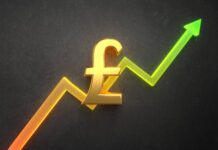Intense selloff in crude oil pulled the price of a barrel to around the $100pb level, which is the critical 50-DMA support to the latest crude rally.
The question is, whether Washington could reverse the positive momentum in oil prices with its promise to release a million barrels of oil from the strategic reserves per day, for the next six months starting from next month.
If history is any indication, strategic oil reserves have a short-term easing effect on oil prices, which is then followed by a rebound to higher levels, as the extra barrels are a quick fix which doesn’t solve the longer-term supply gap. The $100pb level is critical. Clearing this support could pave the way for a further fall toward the $88pb, which coincides with the 100-DMA and the major 61.8% Fibonacci retracement on the latest December – March rally. Yet failure to clear the $100p resistance could reinforce the idea that energy prices will continue surging, and there is nothing the US could do about it.
And oh, OPEC and Russia agreed on Thursday to increase the oil output modestly as widely expected, but more importantly, they dumped the International Energy Agency as a data source in a sign of worsening relations with the West. Not only that OPEC is not standing with the West in the battle to weaken Russia, but the bond with the West is seemingly getting weaker, which certainly calls for more headache in the future, and well, higher prices. So, the output has been raised to 432’000 per barrel, from 400’000 previously. The 32’000 extra barrels per day is nothing but a joke in the face of the deepening energy crisis that the world is going through. The decision comes just in time for April fool!
Can’t ignore the curve inversion
Falling oil prices couldn’t prevent a selloff in equities yesterday, as investors couldn’t stop worrying about the inversion of the 2-10 year curve, and the rumours of recession that come along with it. The S&P500 lost more than 1.50% yesterday, and Nasdaq failed to extend gains above the 200-DMA.
Data
Latest Caixin PMI manufacturing index fell below the 50 mark, showing that the Chinese manufacturing activity contracted in March as the latest measures to contain the Covid outbreak took a severe toll on the economic activity. If China continues insisting on its utopic zero-Covid policy, we may see further slowdown in recovery. And of course, when China sneezes, the world catches a cold: the slowdown in activity in China also means longer waiting times, deeper supply chain crisis, and an additional pressure on consumer prices, for everyone.
Today, the US will reveal how many nonfarm jobs the US economy added last month, and Europe will reveal ho bad inflation got in March. According to the Bloomberg survey, the US economy may have added close to half a million new nonfarm jobs in March. The average hourly earnings, closely watched due to its potential impact on inflation may have risen from 5.1% to 5.5%. A strong NFP print, combined with a strong growth in people’s pay may further boost the Federal Reserve (Fed) hawks, push the short-end of the yield curve higher and weigh on the mood in riskier markets. While a soft read will hardly revive the Fed doves, as the Fed can’t do many things at a time; it has to fix the rising inflation problem.
Speaking of inflation, the European Central Bank (ECB) should also address the inflation problem, in theory, as the price stability is its primary objective. The flash inflation figures will confimr how fast inflation is rising in Europe after inflation in Germany spiked above the 7% mark, and inflation in Spain neared 10%. Despite Christine Lagarde insistingly pushing back the idea that the ECB should act fast to ease the pressure on consumer prices, the market starts preparing for a 50-bp hike before the end of the year to tame inflation. The EURUSD extended gains to 1.1185 yesterday before falling back to the 1.1060 this morning. The incentive to buy a dip is clearly present as the ECB will certainly give in to the rising pressure to hike the rates, but when is the million-euro question. I wouldn’t bet on a large upside potential until we hear a more aggressive tone from the ECB, as Lagarde doesn’t seem to lower her guard faced with the rising inflationary pressures, for now.













